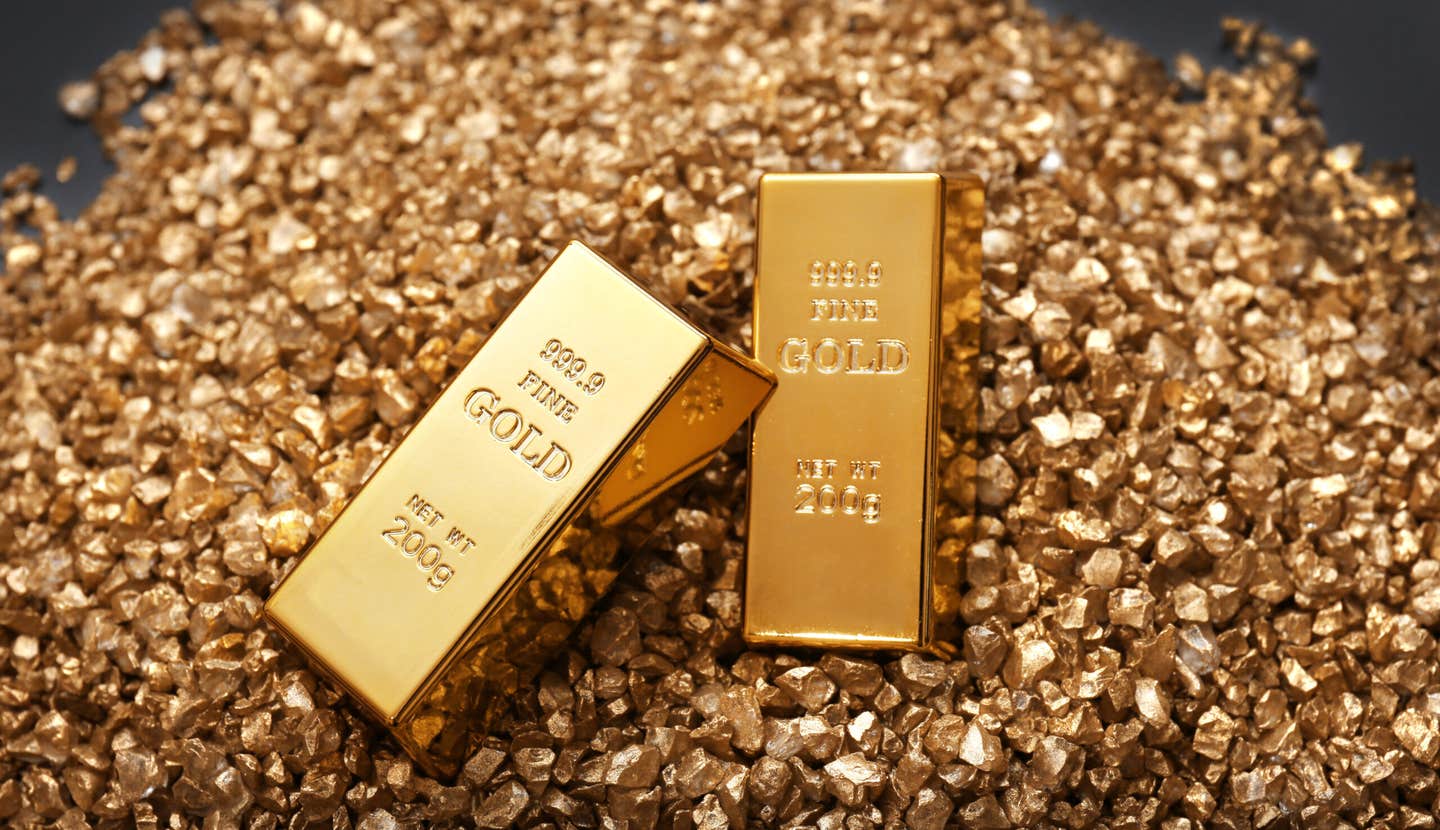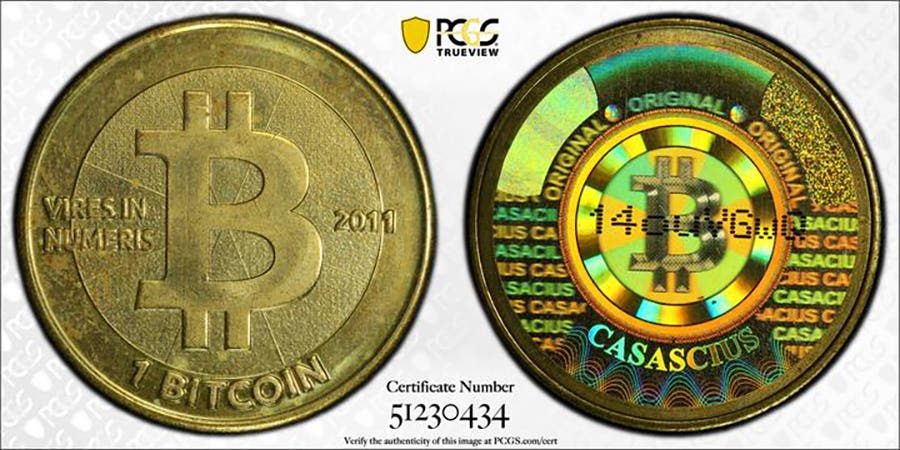Gold And Silver: Get Physical
From ETFs to vault storage, alternative ways to hold gold and silver seem secure—until they’re not. Here’s what you need to know.
Many people who think it prudent to own some gold or silver are not thrilled with having to worry about where to store the physical metals safely. For some, the solution is to acquire forms of what I call “paper gold or silver.” Such forms include shares of stock in gold or silver exchange-traded funds, certificates of deposit for metals stored in the vaults of the Perth Mint in Australia, Royal Canadian Mint in Canada, or Royal Mint in England, gold or silver commodity futures or options contracts, or paying for vault storage such as in Delaware.
In the short term, these might be safe options for thinking one may be invested in the gold or silver markets. But don’t count on them for the longer term.
In March 2010, Jon Corzine (former CEO of Goldman Sachs, U.S. Senator, and New Jersey Governor) became CEO of MF Global. By October 2011, Corzine's actions had driven MF Global into bankruptcy. A respected precious metals newsletter writer who had precious metals in allocated storage in an MF Global vault was never able to get possession of his physical metals, as also happened with a high percentage of other MF Global clients.
Lesson—if you don’t own physical precious metals in your direct custody or segregated storage in a vault, you don’t really own them.
Because of the risk of possible tariffs imposed on future U.S. imports of gold and silver, there have recently been enormous quantities of gold, and to a lesser extent silver, that has been called for delivery in the London Bullion Market Association, the world’s largest gold trading center, to be physically transferred to COMEX and other warehouses in the U.S. In normal trading patterns, only small quantities of gold in the London vaults are called for physical delivery, where such deliveries are completed within a few days.
However, so much gold has been transferred from London to the COMEX and other U.S. vaults in recent weeks. Last week, London’s Financial Times reported that deliveries of physical gold in the London market were now taking 4-8 weeks after request.
In plain English, this means that the firms that promised to deliver their physical metals within a few days when buyers asked for them have effectively defaulted on their contracts!
Ross Norman now operates the MetalDaily.com website. He was the former CEO of Sharps Pixley, one of the five companies that determined the London gold fix. He is an insider’s insider, although he sometimes brings up issues that other insiders would prefer to keep secret.
Earlier this week, Norman published a column, ROSS NORMAN: London Gold Shortages ???, where he acknowledged the gold delivery delays from the London market. However, his explanation was that the delays were the result of a backlog at Swiss refineries that were recasting the London 400-ounce gold bars into kilogram bars to deliver to the COMEX (London’s gold market contracts are for 400-ounce bars while the most common COMEX futures contract is for 100-ounce bars, of which 3-kilogram bars would qualify). That is a sensible explanation, but it doesn’t cover the whole story.
In his column, Norman reported that the London market vaults may currently hold about 280 million ounces of gold inventory (it’s not clear in the column if this includes the gold held in the Bank of England vaults in addition to the LBMA inventories) and that the recent transfer of about 14 million ounces from London to the U.S. is not a reason for concern.
Norman does admit that over half of the gold in London vaults is owned by global central banks. However, he specifically omitted from his column any mention of the amount of gold in those vaults owned by gold exchange-traded funds. Other sources claim that at least one-third of London inventories are owned by ETFs.
When you reduce London inventories by what is owned by central banks and ETFs, less than 50 million ounces are practically available for deliveries. The 14 million ounces transferred to the U.S. are a significant factor in pushing up gold’s price.
The delivery delays and the significant decrease in the London market’s available gold have created a supply squeeze. One-month gold lease rates are normally close to zero. A few weeks ago, they rose to 1 percent, the highest rate they have been in at least a quarter century. Earlier this week, this lease interest rate rose to almost 10 percent!
So, what does this mean if you want to own gold but only hold it in the form of “paper gold?”
In my judgment, this is a signal to cash out your "paper gold" holdings and convert them into physical gold under your direct custody or in segregated vault storage under your own name, and do so without delay!
Here are actions to consider taking if any of these apply to you:
First, sell any shares you own in gold or silver exchange-traded funds and replace them with direct ownership of physical metals in your personal custody.
Second, if you have physical metals in "unallocated storage," that means you don't really own physical metals. Instead, the storage company has title to these assets, and you are a third-party creditor of the storage company. Actions to take include reclassifying your storage arrangements to "segregated storage," which has the effect of putting specific physical metals in your name and no longer the storage company, or taking physical delivery of these metals personally or moving them to another storage company that will hold them in segregated storage. This move is especially important for any Precious Metals IRA accounts people may have. Find out immediately if you don't know the legal form of your vault storage (unallocated, allocated, or segregated).
Third, if you have a metals account stored in the vaults of the Royal Canadian Mint, Perth Mint, or Royal Mint denominated in weight rather than in specific product, either get the ounces fabricated into specific products or, even if you don't, either way, ask to take physical delivery to you or to a storage company that will provide segregated storage.
At one point, the Perth Mint took 6 months to convert their huge gold and silver bars into fabricated products to deliver to customers who wanted to withdraw their metals. Don't be surprised if a backlog delay develops again.
Fourth, suppose you have any problems trying to take delivery of your physical metals or converting your unallocated vault holdings into segregated storage. In that case, you may want to consider selling these "paper gold" assets and replacing them with actual physical gold (and silver) that you have in your direct custody or segregated vault storage in an account under your name. If you get any runaround, consider that to be a major red flag that you need to take prompt action to protect your finances.
Last week’s numismatic trivia question.
Last time, I asked—Current U.S. coins state “United States of America” as required by legislation. Why do both sides of current U.S. paper money instead state “The United States of America?” I was not able to find the answer to this question, although I assume that the terminology is specified in legislation. It is also possible that it is a residual from the text of Gold Certificates, Silver Certificates, and other early U.S. currency that included verbiage such as “This Certifies That There Has Been Deposited In The Treasury Of The United States Of America . . ..” Another possibility is that there is more room on U.S. currency to include “The.” Do readers have further information on why the reference to the country on U.S. coins and currency differs?
This week’s trivia question
Here is this week’s question. Who was the model for his portrait on an issue of US currency who never saw the notes enter circulation? Come back next week for the answer.








